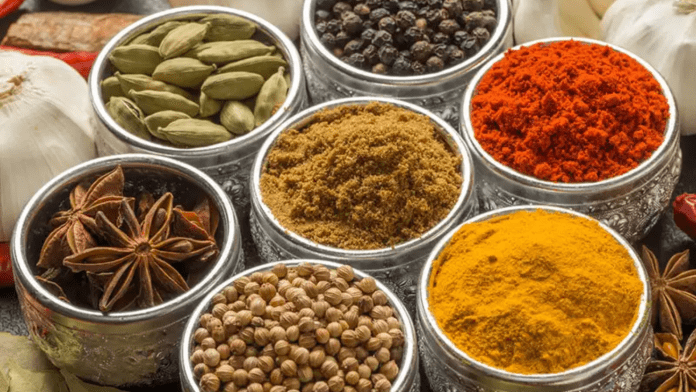The cost of spices has surged dramatically, ranging from 20% to 80%, placing consumers in a difficult position and disrupting domestic budgets.
In the past month, a significant majority of spices have experienced an unprecedented price surge, according to traders. This turmoil in the spice market has driven the price increases, they claim. Currently, the domestic spice industry is wrestling with a supply-demand imbalance, brought about by a multifaceted set of factors. These factors include changing weather patterns, intense heatwaves, diminished crop yields, and a surge in export demands. The aftermath of Cyclone Biparjoy and the adverse effects of the ongoing monsoon season have collectively disrupted transportation and exacerbated the current shortage, leading to the subsequent rise in prices.
Meera Debnath, a homemaker, said, “Retail prices of common spices like turmeric and cumin have skyrocketed to the point where we’re barely using a pinch. Our dishes have lost their zest. In an average Bengali household, food is a top priority, and we strive to make it delicious. But the soaring spice prices are making it increasingly challenging to strike that balance.”
Wholesale spice prices in the domestic market have undergone a substantial increase, approximately reaching 40%. Various spices, including cumin (jeera), both small and large varieties of cardamom, dry turmeric, and cloves (laung), have experienced significant price hikes. This mounting price pressure within the domestic spice market has been ongoing for several months. Notably, farmers in major spice-producing regions have redirected their efforts toward cultivating alternative crops like cotton, mustard seed, groundnut, and soybean. This shift is primarily a response to erratic weather patterns, particularly the unpredictable rainfall during the sowing season across the country.
Crops with prolonged growth cycles, such as turmeric, coriander (dhania), and cumin (jeera), are particularly affected. Typically sown during the Rabi season, these crops typically reach maturity by late December or early January of the subsequent year.
Biswanath Agarwal of the Post Merchants Association said, “Jeera is a once-a-year crop, and this year’s damage is estimated at a staggering 30%-40%. Sowing for several crops, such as turmeric, has seen a sharp decline due to unseasonal rains. The coriander belt in Rajasthan has been decimated by the cyclonic storm Biparjoy. Dry chili production has dwindled due to deficient rainfall in Andhra Pradesh and Telangana.”
Agarwal went on to forecast a minimum 15% price increase within the next three months. Anticipated high demand during the upcoming festival season is likely to further exacerbate the situation. The domestic spice market is already grappling with significant pressure, and as the scarcity of spices worsens and prices continue to rise, these essential kitchen ingredients have transformed into valuable commodities.


